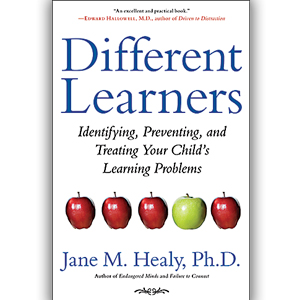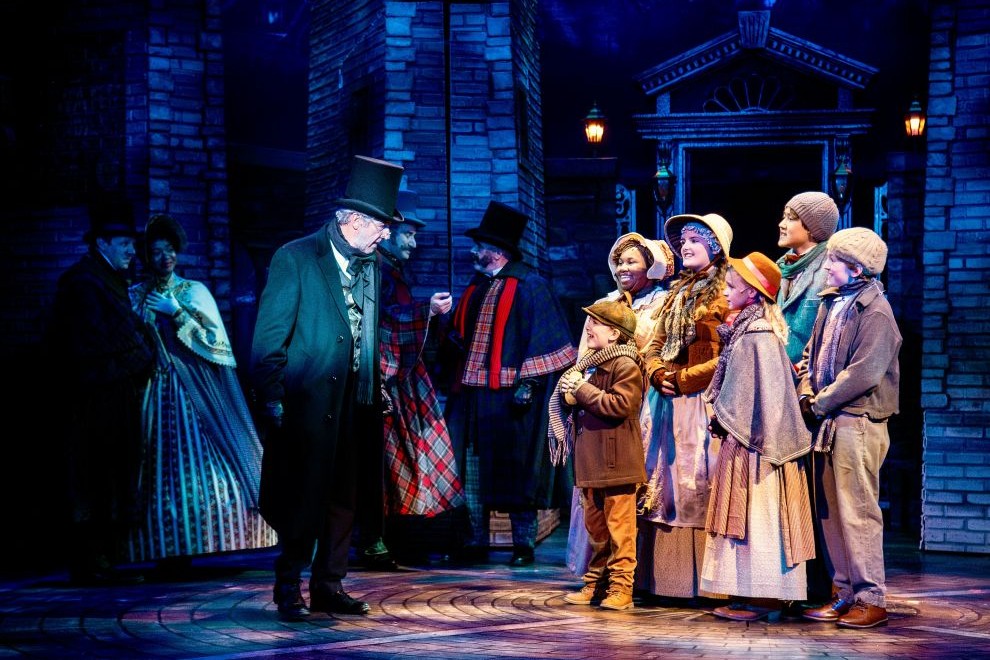This November, parents across the country will be sitting down at conferences to discuss children’s strengths and weaknesses; therefore, as a teacher of twenty-three years, I decided to feature Different Learners: Identifying, Preventing, and Treating Your Child’s Learning Problems by Jane M. Healy in the hopes of aiding the process.
While Healy addresses learning disorders, Different Learners offers parents a comprehensive guide to a plethora of learning problems. Using scientific research, Healy not only suggests solutions but also offers preventative measures to combat the consequences of “today’s fast-paced, stressed-out lifestyles.”
Healy explains that a large data analysis in 2000 by Jean M. Twenge found that normal children in the U.S. reported more anxiety symptoms than child psychiatric patients in 1950. A big part of the problem, according to Healy, is that almost half of American adults are “extremely stressed” from trying to meet the demands of work and family activities. Healy explains that in an attempt to give their child every advantage these parents, ironically, may also be giving their child a learning problem.
“Chronic stress creates a smoldering neutral firestorm that can disrupt logical thinking, memory, and attention, not to mention motivation and self-esteem,” argues Healy. “It can worsen or even cause learning deficits and ADHD symptoms.” This situation is compounded by two factors. First, most Americans no longer engage in the most common form of stress relief – exercise. Second, many children are exposed to violence in media, and since they have not outlet to relieve the stress caused by these arousing visual images, it causes the “brain to respond physiologically to viewed violence as if the viewer were a first person participant.” As a result, Healy explains brain scans revealed that “heavy exposure to media violence reduced brainpower in areas associated with self-control and attention.”
Healy offers parents a variety of buffers for stress as well as addressing the fact that many parents are “confused by unsubstantiated hype about a need to accelerate learning in order to cope with our rapidly changing technological age.” While it’s good to have high expectations, Healy urges readers to remember that parents must be sure that they are grounded in reality.
Also, Healy explains how “scientific evidence is mounting that many learning, behavior, and mood disorders stem at least in part from careless or uninformed food choices.” She urges parents to do their kid’s brain a favor by becoming nutrition-conscious.
In addition, “brain function is the first casualty when a child isn’t getting enough sleep. Research documents a strong relationship between insufficient sleep and children’s learning, memory, mood, and attention problem,” Healy maintains. “Yet teachers cope every day with tired, mentally listless, or hyper students who arrive at school chronically sleep deprived.”
Are your kids getting sufficient sleep? According to Different Learners:
Infants up to 6 months need 16-20 hours
6 months-2 year olds need about 15 hours
2-6 year olds need 10-12 hours
7-13 year olds need 9-11 hours
14-18 year olds need 8 ½-9 ½ hours
This is consistent with the research on “The Lost Hour” in Nurture Shock by Po Bronson and Ashley Merriman, which I blogged about previously.
Finally – at the risk of sounding like a broken record for I feel like every month I’m saying, “Read. Read. Read” – Healy reiterates the importance of reading. She reports estimates indicate that 80 to 90 percent of children in need of special services require assistance with reading so you may wish to check out my posts on The Book Whisperer as well as Summer Reading 101 for more tips.
Different Learners does a good job of showing parents that “most learning problems are variations in normal development.” Healy encourages parents to keep in mind that “each child is a complex, growing, learning system who develops as part of a much larger system.” Unfortunately, until our culture becomes aware of what kids’ brains really need, Healy believes there will continue to be trouble in our classrooms.
So if you’re interested in learning more about the tools necessary to improve every child’s ability to learn, then check out Different Learners by Jane M. Healy.
You may also want to check out my posts on Healy’s previous book, Failure to Connect.





